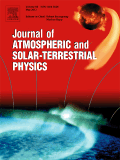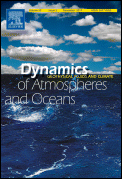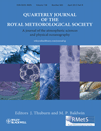
Weather and Climate
Scope & Guideline
Pioneering Research for a Sustainable Future
Introduction
Aims and Scopes
- Atmospheric Science and Weather Systems:
Research focusing on the dynamics of weather patterns, including severe weather events, and their impact on local and regional climates. - Climate Change and Variability:
Investigation into the implications of climate change, including extreme weather phenomena and long-term climate trends, particularly in the context of New Zealand. - Climate Data Analysis and Reanalysis:
Utilization of historical and modern climate data, including reanalysis techniques, to assess and improve understanding of climate systems. - Interdisciplinary Approaches to Weather and Climate:
Integration of various scientific disciplines, such as meteorology, oceanography, and environmental science, to provide comprehensive insights into climate-related issues. - Regional Climate Studies:
Focused studies on the climatic characteristics and specific weather events in New Zealand, contributing to localized understanding and forecasting.
Trending and Emerging
- Extreme Weather Events Analysis:
There is a marked increase in studies examining extreme weather events, particularly in relation to climate change impacts, indicating a critical need for understanding how these events affect local communities and ecosystems. - Ocean-Atmosphere Interactions:
Research exploring the interactions between oceanic conditions and atmospheric phenomena is gaining traction, highlighting the importance of these relationships in climate variability and weather forecasting. - Time Series and Climate Trend Analysis:
A growing emphasis on time series analysis of climatic variables demonstrates a trend towards understanding long-term shifts in climate patterns and their implications for future weather systems. - Innovative Climate Modeling Techniques:
Recent publications are increasingly utilizing advanced modeling techniques and reanalysis data, reflecting a trend towards more sophisticated approaches to simulate and predict weather and climate phenomena. - Impact of Climate Change on Regional Weather Patterns:
Emerging studies are focusing on how global climate change specifically affects regional weather patterns in New Zealand, emphasizing the relevance of localized research in the context of broader environmental changes.
Declining or Waning
- Historical Weather Events:
While historical analyses of weather events such as the 'Superstorm 1950' are still relevant, the focus on isolated historical events appears to be waning in favor of more contemporary analyses and predictive modeling. - General Climate Models without Regional Focus:
There seems to be a decline in the publication of broad climate models that do not specifically address regional or local phenomena, as the journal increasingly emphasizes localized studies relevant to New Zealand. - Basic Meteorological Observations:
Research that merely presents observational data without deeper analysis or contextual insights is becoming less frequent, suggesting a shift towards more complex and integrative studies.
Similar Journals

JOURNAL OF THE METEOROLOGICAL SOCIETY OF JAPAN
Exploring the Frontiers of Meteorological ScienceJournal of the Meteorological Society of Japan, ISSN 0026-1165 (E-ISSN 2186-9057), is a leading academic journal published by the Meteorological Society of Japan, dedicated to advancing the field of atmospheric sciences. Established in 1905, the journal has a long-standing tradition of publishing high-quality research that contributes to our understanding of meteorology, climatology, and environmental science. As an Open Access journal since 2018, it ensures wide dissemination of knowledge, allowing researchers, professionals, and students to access cutting-edge studies without barriers. With an impressive impact factor and ranked in the Q1 category in Atmospheric Science, it is recognized for its significant contributions, currently holding a Scopus rank of #36 out of 148 in the field. The journal serves as a vital resource for those involved in meteorological research, policy-making, and education, fostering collaboration and innovation within and beyond Japan.

JOURNAL OF ATMOSPHERIC AND SOLAR-TERRESTRIAL PHYSICS
Pioneering Insights into Atmospheric and Solar-Terrestrial PhysicsJournal of Atmospheric and Solar-Terrestrial Physics, published by Pergamon-Elsevier Science Ltd, stands as a pivotal academic resource in the realms of Atmospheric Science, Geophysics, and Space and Planetary Science. With an ISSN of 1364-6826 and an E-ISSN of 1879-1824, this journal encompasses a robust collection of research findings and reviews that address the intricacies of atmospheric processes and solar-terrestrial interactions. The journal has shown consistent academic performance, earning commendable rankings in 2023, including Q3 in Atmospheric Science and Q2 in Geophysics, reflecting its importance for scholarly communication and advancement in these fields. Spanning an impressive convergence of research from 1997 to 2024, it aims to foster interdisciplinary collaboration and inspire innovations among researchers, professionals, and students. Although it currently does not offer open access, the journal is committed to disseminating high-quality content that continues to drive forward our understanding of complex environmental phenomena.

ADVANCES IN ATMOSPHERIC SCIENCES
Fostering Innovation in Meteorological StudiesADVANCES IN ATMOSPHERIC SCIENCES is a highly esteemed journal published by SCIENCE PRESS, dedicated to advancing the field of atmospheric sciences. With an impressive impact factor and ranking as Q1 in Atmospheric Science as of 2023, this journal serves as a leading platform for researchers, professionals, and students to disseminate substantial findings and innovative methodologies across various topics within the atmospheric sciences domain. Established in 1984 and continuously publishing through to 2024, it has successfully positioned itself among the top ranks, currently standing at #17 out of 148 in the Scopus category, highlighting its significance in the field with a remarkable 88th percentile. Although it operates under traditional access, the journal provides invaluable insights into climate dynamics, meteorology, and environmental processes that are crucial for both academic and practical applications. Based in Beijing, China, ADVANCES IN ATMOSPHERIC SCIENCES is committed to fostering a global dialogue and collaboration among scholars and industry experts, making it an essential resource for those invested in understanding and addressing contemporary atmospheric challenges.

DYNAMICS OF ATMOSPHERES AND OCEANS
Navigating the Complexities of Earth's SystemsDYNAMICS OF ATMOSPHERES AND OCEANS, published by Elsevier, is a renowned journal that has established itself as a vital resource in the fields of atmospheric science, oceanography, and geology. With a rich publication history stretching from 1976 to 2024, this journal provides a platform for high-quality research that addresses the complex interactions between the atmosphere and oceans, which are critical to understanding climate change and environmental systems. It enjoys a respectable impact factor and a reputable position within its category quartiles, specifically noted as Q2 in critical domains such as Computers in Earth Sciences and Oceanography. Researchers and professionals benefit from its indexed coverage, featuring a Scopus ranking that places it among the leading journals in its categories. Although it is not an open-access journal, readers can access its cutting-edge articles through institutional subscriptions or individual purchases. The journal aims to foster cross-disciplinary dialogue and innovation by publishing original research, reviews, and insightful commentary, making it a cornerstone for scholars, students, and practitioners committed to advancing knowledge in the dynamic interplay of Earth's atmospheric and oceanic systems.

TELLUS SERIES A-DYNAMIC METEOROLOGY AND OCEANOGRAPHY
Fostering Collaboration in Atmospheric and Oceanic ResearchTELLUS SERIES A-DYNAMIC METEOROLOGY AND OCEANOGRAPHY, published by Stockholm University Press, is a prestigious open-access journal that has been at the forefront of research in the fields of atmospheric science and oceanography since its inception in 1983. With an enduring commitment to disseminating high-quality, peer-reviewed research, the journal has achieved a commendable impact factor, securing its position in the Q2 category for both Atmospheric Science and Oceanography as of 2023. The journal's significant reach is reflected in its Scopus rankings, being positioned at Rank #51 in Oceanography and Rank #77 in Atmospheric Science. With open access established since 2012, TELLUS SERIES A serves not only as a vital resource for researchers and professionals in these dynamic fields but also as an inclusive platform for budding scholars and students. Engaging with this journal allows readers to stay updated on the latest developments and groundbreaking discoveries that advance our understanding of climate systems and marine environments. Its editorial ethos emphasizes the cross-disciplinary integration of atmospheric and oceanographic studies, making it an essential publication for anyone invested in environmental research and policy.

Atmospheric Science Letters
Exploring the dynamics of our atmosphere.Atmospheric Science Letters, published by WILEY, is a leading open-access journal in the field of Atmospheric Science. Since its establishment in 2000, it has significantly contributed to advancing knowledge related to the Earth's atmosphere, focusing on both theoretical and practical aspects. With an impressive Q2 ranking in the Atmosphere Science category as of 2023 and a Scopus rank of 62 out of 148, this journal provides a platform for researchers and professionals to share their findings and insights. The journal’s commitment to open access since 2016 ensures that cutting-edge research is accessible to a global audience, fostering collaboration and innovation in the atmospheric sciences. Addressed from its headquarters at 111 River St, Hoboken, NJ, USA, Atmospheric Science Letters is pivotal for students, researchers, and professionals seeking to stay abreast of the latest developments in this dynamic field.

Journal of Tropical Meteorology
Exploring Atmospheric Wonders in the TropicsJournal of Tropical Meteorology, published by JOURNAL OF TROPICAL METEOROLOGICAL PRESS, is a leading scholarly journal dedicated to advancing the understanding of atmospheric phenomena and meteorological patterns in tropical regions. With an ISSN of 1006-8775, this journal plays a vital role in disseminating high-quality research, focusing on critical issues such as climate variability, weather forecasting, and tropical cyclone dynamics. The journal, which is indexed in Scopus with a respectable rank in the low quartile of Q3 in Atmospheric Science, aims to provide a platform for researchers and professionals to share groundbreaking insights and foster collaboration within the scientific community. Although it follows a traditional access model, the Journal of Tropical Meteorology encourages submissions from a diverse range of disciplines, thus enriching the field with a variety of perspectives. By bridging theory and practical applications, this journal serves as an essential resource for students, researchers, and practitioners striving to expand their knowledge and contribute to the global conversation on meteorology.

QUARTERLY JOURNAL OF THE ROYAL METEOROLOGICAL SOCIETY
Connecting scholars and practitioners in atmospheric research.The Quarterly Journal of the Royal Meteorological Society, published by Wiley, stands as a prestigious platform in the field of Atmospheric Science, with a commendable impact reflected in its Q1 quartile ranking and a notable Scopus rank of 4th out of 148, placing it in the 97th percentile among its peers. With origins tracing back to 1873, this journal has established itself as a cornerstone for disseminating high-quality research, engaging articles, and innovative methodologies that advance our understanding of meteorological phenomena. Although it is not an open-access journal, the rigorous peer-review process ensures that only the most significant contributions are published, making it essential reading for researchers, professionals, and students dedicated to atmospheric and planetary sciences. For those interested in cutting-edge findings and comprehensive reviews, the Quarterly Journal of the Royal Meteorological Society is an invaluable resource in enhancing scientific knowledge and collaboration in this dynamic and evolving field.

JOURNAL OF GEOPHYSICAL RESEARCH-ATMOSPHERES
Illuminating groundbreaking research in geophysical studies.JOURNAL OF GEOPHYSICAL RESEARCH-ATMOSPHERES, published by the American Geophysical Union, is a leading peer-reviewed journal dedicated to advancing our understanding of atmospheric science and related disciplines. With an impressive impact factor and consistently holding a Q1 ranking across key categories including Atmospheric Science and Geophysics, this esteemed journal caters to a global audience of researchers, professionals, and students eager to explore groundbreaking studies and insights. The journal covers a comprehensive scope of topics, from climate dynamics to atmospheric processes, enhancing knowledge and informing practices within the realm of Earth and Planetary Sciences. With its strong emphasis on quality research, it remains a vital resource for those engaged in unraveling the complexities of our planet’s atmosphere. Explore this journal to stay abreast of significant developments and foster a deeper understanding in this ever-evolving field.

JOURNAL OF CLIMATE
Transforming Insights into Action on Climate ChangeThe JOURNAL OF CLIMATE, published by the American Meteorological Society, stands as a premier source of cutting-edge research in the field of atmospheric science. With an impressive impact factor reflecting its rigorous peer-review process, this journal ranks in the top 20 of its category according to Scopus, with a remarkable percentile of 88th. Since its inception in 1988, the JOURNAL OF CLIMATE has been a vital platform for disseminating high-quality studies that deepen our understanding of climate systems and their global implications. It serves a diverse audience of researchers, professionals, and students interested in climate variability, climate change, and the dynamics of atmospheric processes. Though not an open-access journal, it offers wide accessibility through numerous academic repositories. As it continues to publish essential findings up to 2024, this journal plays a crucial role in advancing knowledge and fostering dialogue within the atmospheric science community.